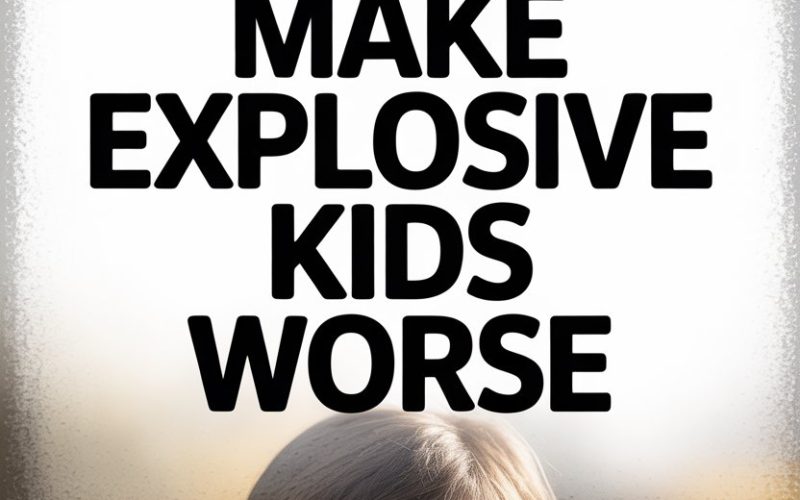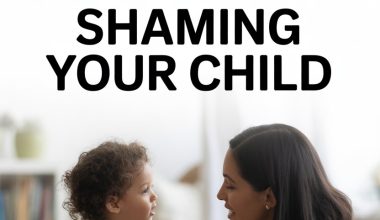Anyone who’s ever read a parenting book or spent five seconds on a parenting forum has heard about timeouts. Plop your child in a spot away from the action. Wait for them to calm down.
Magic! Except, if you’re raising an explosive kid—the kind of child who can go from zero to nuclear faster than you can say “peaceful parenting”—timeouts often have the opposite effect.
If the idea of another timeout standoff has you eyeing the biscuit tin, you’re not alone.
Let’s unpack why this classic technique usually backfires with explosive children, and what’s actually worth a shot when your little volcano erupts.
Why Timeouts Look Good on Paper (But Often Fail in Real Life)
The theory behind timeouts is simple enough: remove attention, stop the behavior. For some kids, that works.
But children who are wired to go big with their emotions—who can melt down over the wrong-coloured cup or a pair of socks that feel “funny”—aren’t misbehaving as a calculated ploy for attention. They’re overwhelmed.
Their nervous systems are in overdrive, limbs flailing, logic gone out the window.
For these kids, being sent away when they’re already dysregulated feels less like a helpful reset and more like exile.
Experts such as Dr. Ross Greene, author of The Explosive Child, have compared timeouts for explosive kids to “throwing a drowning person a barbell.” Instead of helping them calm down, it ramps their distress up to eleven.
Connection Trumps Consequences
When a child’s brain is in meltdown mode, the thinking part (the prefrontal cortex, for those who like to name-drop brain parts at dinner parties) is taking a holiday. The emotional centres are running the show.
Timeouts, which rely on a child’s ability to reflect, reason, and self-soothe, assume those skills are fully online. For explosive children, that’s wishful thinking.
What calms a stormy brain isn’t isolation, but connection. Researchers like Mona Delahooke, author of Beyond Behaviors, highlight that co-regulation—a calm adult helping a child find their own calm—is the cornerstone for supporting intense kids.
When you sit beside your child, or just stay nearby, you’re sending the message: “You’re having a hard time, but you’re not alone.”
Often, that’s the first step toward true self-regulation. (And yes, you’re allowed to grit your teeth and count to ten under your breath.)
Shame Isn’t a Shortcut to Better Behaviour
Sit in the corner and think about what you’ve done. Sounds familiar? The problem is, for explosive kids, timeouts can be a fast track to shame, not insight.
Instead of reflecting on their actions, children often stew in feelings of rejection and humiliation. Cue an even bigger meltdown when the timeout ends, or a sullen, withdrawn child who’s learned to bottle things up.
Clinical psychologist Dr. Laura Markham, from Aha! Parenting, describes it well: shame doesn’t teach self-control. It teaches kids to feel bad about themselves.
The more shame a child feels, the less likely they are to learn from their mistakes. Even if you want them to ponder life’s mysteries in the naughty chair, most kids are just cycling through, “Mum hates me. No one loves me. This is the worst.”
Not exactly a recipe for growth.
Timeouts Don’t Teach the Skills Explosive Kids Need
Here’s what many of us forget in the heat of the moment: challenging behaviour is a sign of lagging skills, not “badness.” Explosive kids often struggle with frustration tolerance, flexibility, and impulse control.
Timeouts don’t build those skills—they just highlight the lack.
Imagine sending a toddler to their room with the command, “Don’t come out until you know how to ride a bike.” Ridiculous, right?
Expecting explosive children to develop emotional skills alone in a corner is just as unrealistic.
What helps? Naming feelings. Problem-solving together. Practising calming strategies outside of the meltdown zone. The aim is to coach, not punish.
Timeouts Trigger More Explosions
If you’ve ever tried to escort a raging child to a “calm down corner,” you’ve probably wound up with a foot in your shins. For kids whose fuse is already short, timeouts are like waving a red rag at a bull.
Suddenly, you’re not just battling the original issue—now you’ve got another round of screaming, hitting, or door-slamming to add to your parenting highlight reel.
Data from researchers at Yale Child Study Center has shown that children with intense emotional reactions actually need more support and structure, not separation.
Timeouts often escalate conflict, leaving everyone frazzled and, let’s be honest, questioning their life choices.
What Actually Helps Explosive Kids?
Fair question. It’s not about letting your child run the show or ignoring unsafe behaviour. It’s about shifting from punishment to support without turning your home into a lawless wasteland.
- Stay close, stay calm
Not easy, especially when your child is in full banshee mode. Your calm presence is contagious, even if it takes time for your child to catch it. Take slow breaths, keep your voice gentle, and remind yourself: this is a storm, not a battle. - Validate big feelings
You don’t have to agree, but you can acknowledge. “You’re really angry your screen time is over. That’s tough.” When kids feel understood, the temperature drops faster than if you try to shut it down. - Offer choices and problem-solve later
After the storm passes, invite your child to help figure out what went wrong—and what to do next time. This builds skills without piling on the guilt. Dr. Ross Greene’s Collaborative & Proactive Solutions approach is a goldmine for this. - Teach calming strategies when calm
Practice deep breathing, squeezing a stress ball, or drawing feelings when everyone’s settled. The time to introduce coping tools is never mid-tantrum. That’s like teaching someone to swim by tossing them in the deep end, then shouting instructions from the shore. - Set firm, clear boundaries—with empathy
You can be kind and still be the grown-up. “I won’t let you hit. I’m right here with you.” Safety comes first, always.
When Every Night Feels Like World War III
If it sounds like a lot, that’s because it is. Parenting an explosive child can be exhausting, isolating, and, if we’re honest, occasionally soul-crushing.
No one expects you to be a Zen master with a halo of patience. Sometimes your best is “I didn’t shout, and I didn’t lock myself in the loo.”
Progress isn’t a straight line. Some days you’ll nail it, other days you’ll want to retire to a cabin in the woods.
But shifting away from timeouts—especially if they just turbocharge your child’s distress—is a gift to your relationship, and to your child’s long-term development.
What About School? Grandparents? The Real World?
One of the trickiest parts of moving beyond timeouts is the barrage of “But how will they cope when…” questions from well-meaning family and teachers.
Here’s the thing: explosive kids aren’t lacking discipline; they’re lacking regulation. The more chances they get to practise emotional skills with your help, the better equipped they’ll be to handle life outside your home.
Share resources with other caregivers. Model what works.
If Grandma’s convinced “a smack never did her any harm,” try, “We’re working on some new ways to handle big feelings. This is what helps Sam the most.”
It may take time (and more than a few cups of tea), but when your child feels seen and supported, their ability to cope in school—and everywhere else—goes up, not down.
Your Sanity Matters Too
None of these suggestions mean you have to tolerate dangerous or disrespectful behaviour. If you feel yourself losing it, step away safely: “I need a minute. I’ll be back when I’m calm.”
That’s not a timeout, it’s modelling self-regulation. Your kid learns just as much from watching you recover as they do from your best parenting moments.
Take breaks. Ask for help. Text a friend who gets it. There’s no prize for martyrdom, and your child needs a parent who’s resourced enough to ride out the storms.
Timeouts Are a Parenting Tool—But Not for Every Child
Some families swear by timeouts.
If they work for you, fantastic. But for kids who feel things deeply and show it loudly, connection beats isolation every time.
The job isn’t to punish the emotion, but to teach the skills needed to handle it.
Next time your child goes full supernova, skip the timeout—and try sitting with them instead.
You might be surprised at how much calmer both of you feel. (And you might even get to finish that cup of tea before it goes cold. Stranger things have happened.)





